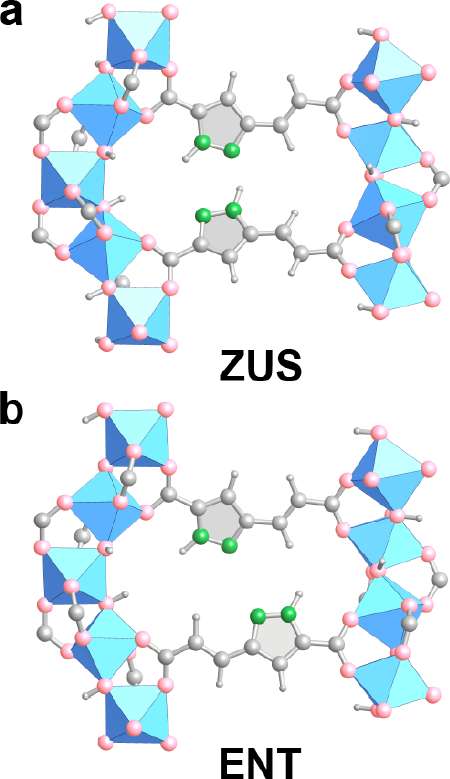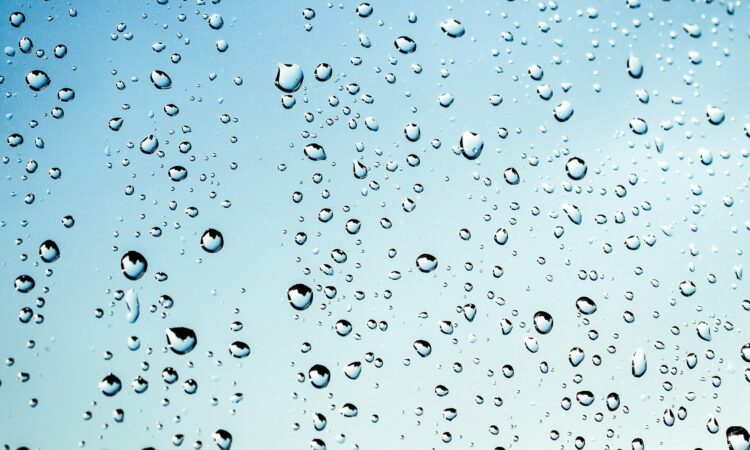Title: MOF Linker Extension Strategy for Enhanced Atmospheric Water Harvesting
Authors: Nikita Hanikel, Daria Kurandina, Saumil Chheda, Zhiling Zheng, Zichao Rong, Ephraim Neumann, Joachim Sauer, Ilja Siepmann, Laura Gagliardi, Omar M. Yaghi
Journal: ACS Central Science
Year: 2023
Featured image by ChristopherPluta from Pixabay
—
In 2020, over two billion people lived without access to safely managed drinking water. Climate change and increasing global population have contributed to a growing lack of both physical and economic access to freshwater resources across the world. As part of an effort to reduce water scarcity, researchers are now studying ways to harvest water from the atmosphere, even in arid climates, to meet the growing demand for clean water.
One class of materials used to harvest water from the air is metal-organic frameworks, or MOFs. MOFs are made up of metal ions that are coordinated to organic molecules, or “linkers,” to form a connected structure. The chains of metal ions and organic linkers branch out in all three dimensions to form an extended solid network. MOFs are often porous, and the open pores inside the structures can hold and store water.
Researchers can increase the pore volume – and therefore the amount of water the MOF can hold – by changing the length or structure of the organic linker. Yaghi and coworkers have developed a new MOF that harvests more water from the air than previously developed MOFs by expanding the organic linkers that connect the metal ions.
The research team aimed to increase the pore volume of a MOF known as MOF-303 that absorbs water from the atmosphere even at low humidity. The team synthesized a new MOF, MOF-LA2-1, by adding a vinyl group to the organic linker of MOF-303 (see Figure 1). They found that with the new linker, the volume of the pores in MOF-LA2-1 was about 1.4 times larger than those in MOF-303. The larger pore volume allows MOF-LA2-1 to store up to 50% more water than MOF-303.

Figure 1: The organic linkers used in (a) MOF-303 and (b) MOF-LA2-1. Adapted from Hanikel et al.
The addition of a vinyl group to the organic linker changes the water storage properties of the pore. The first few water molecules stored in MOF-303 form hydrogen bonds with the nitrogen atoms in the organic linker. Since the linker used in MOF-303 is almost symmetrical, the orientation of the linker within the structure doesn’t affect how much water MOF-303 can store. But with the addition of the vinyl group, the linker is no longer symmetrical. The orientation of each linker within MOF-LA2-1 therefore affects how well water can form hydrogen bonds with the nitrogen atoms in the linker, and consequently affects how much water the pores of MOF-LA2-1 can hold.
Figure 2 shows examples of different ways the linkers can be arranged within MOF-LA2-1. In Figure 2A, the linkers are arranged in the “ZUS” configuration (from the German word “zussamen,” meaning together): the nitrogen atoms, shown in green, are on the same side of the pore. The “ENT” configuration (from the German word “entgegen,” meaning opposite), with the nitrogen atoms on opposite sides of the pore, is shown in Figure 2B. The researchers developed computer models of MOF-LA2-1 to find the linker arrangement that maximizes water storage. They found that the ZUS configuration was most stable and allowed MOF-LA2-1 to absorb the most water. Just like how it’s easier to lift something heavy if you have someone across from you to help lift the other end, the nitrogen atoms can hold water molecules in place more easily if they’re directly across the pore from each other.

Figure 2: The (a) ZUS and (b) ENT configurations of the organic linker in MOF-LA2-1. Adapted from Hanikel et al.
The distribution of clean water will be one of the world’s most pressing issues over the next decades. The ability to capture water directly from the air will help mitigate regional water scarcity, particularly in regions with low annual rainfall or seasonal dry conditions. Technologies like atmospheric water harvesting will also help achieve the United Nations’ goal of securing safe drinking water for everyone by 2030.

